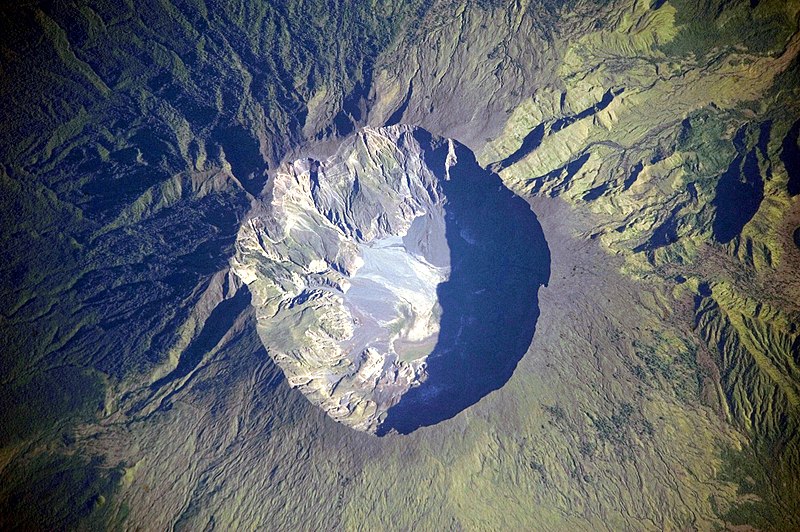Fil:Mount Tambora Volcano, Sumbawa Island, Indonesia.jpg

Størrelse af denne forhåndsvisning: 800 × 532 pixels. Andre opløsninger: 320 × 213 pixels | 640 × 425 pixels | 1.024 × 680 pixels | 1.280 × 851 pixels | 2.560 × 1.701 pixels | 4.256 × 2.828 pixels.
Fuld opløsning (4.256 × 2.828 billedpunkter, filstørrelse: 2,29 MB, MIME-type: image/jpeg)
Filhistorik
Klik på en dato/tid for at se filen som den så ud på det tidspunkt.
| Dato/tid | Miniaturebillede | Dimensioner | Bruger | Kommentar | |
|---|---|---|---|---|---|
| nuværende | 24. feb. 2011, 14:55 |  | 4.256 × 2.828 (2,29 MB) | Originalwana | higher res |
| 15. apr. 2010, 19:37 |  | 1.440 × 960 (619 KB) | Rosenzweig | Reverted to version as of 11:04, 19 July 2009. Back to Commons version. | |
| 15. apr. 2010, 19:37 |  | 1.440 × 960 (459 KB) | Rosenzweig | different version from de.wp | |
| 19. jul. 2009, 13:04 |  | 1.440 × 960 (619 KB) | Originalwana | {{Information |Description={{en|1=This detailed astronaut photograph depicts the summit caldera of the volcano. The huge caldera—6 kilometres in diameter and 1,100 meters deep—formed when Tambora’s estimated 4,000-meter-high peak was removed, and th |
Filanvendelse
Den følgende side bruger denne fil:
Global filanvendelse
Følgende andre wikier anvender denne fil:
- Anvendelser på af.wikipedia.org
- Anvendelser på ar.wikipedia.org
- Anvendelser på ast.wikipedia.org
- Anvendelser på ban.wikipedia.org
- Anvendelser på be.wikipedia.org
- Anvendelser på bn.wikipedia.org
- Anvendelser på ca.wikipedia.org
- Anvendelser på cs.wikipedia.org
- Anvendelser på de.wikipedia.org
- Anvendelser på en.wikipedia.org
- Anvendelser på en.wikiversity.org
- Anvendelser på en.wikivoyage.org
- Anvendelser på eo.wikipedia.org
- Anvendelser på es.wikipedia.org
- Anvendelser på fa.wikipedia.org
- Anvendelser på fr.wikipedia.org
- Anvendelser på fr.wiktionary.org
- Anvendelser på gl.wikipedia.org
- Anvendelser på gor.wikipedia.org
- Anvendelser på he.wikipedia.org
- Anvendelser på hr.wikipedia.org
- Anvendelser på id.wikipedia.org
- Gunung Tambora
- Wikipedia:Hari ini dalam sejarah/April
- Wikipedia:Gambar pilihan/2011
- Wikipedia:Gambar pilihan/Usulan/2011/54 Intro
- Wikipedia:Gambar pilihan/54 2011
- Templat:Hari Ini Dalam Sejarah/April
- Wikipedia:Gambar pilihan/Tempat/Landskap
- Wikipedia:Arsip halaman utama/2023/04/10
- Wikipedia:Arsip halaman utama/2024/04/10
- Anvendelser på it.wikipedia.org
- Anvendelser på ja.wikipedia.org
- Anvendelser på ka.wikipedia.org
- Anvendelser på kk.wikipedia.org
- Anvendelser på mk.wikipedia.org
Vis flere globale anvendelser af denne fil.



